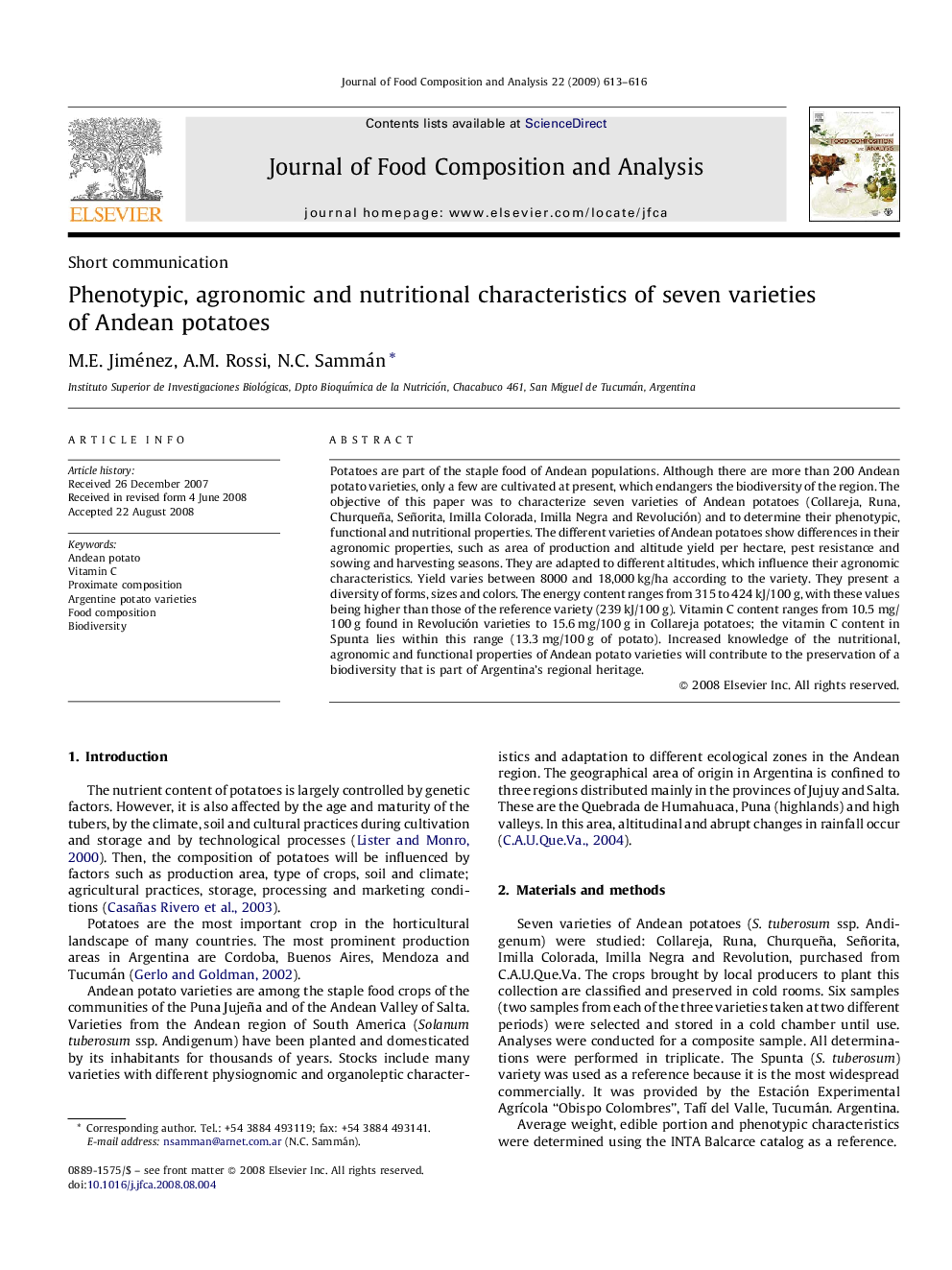| Article ID | Journal | Published Year | Pages | File Type |
|---|---|---|---|---|
| 1219111 | Journal of Food Composition and Analysis | 2009 | 4 Pages |
Potatoes are part of the staple food of Andean populations. Although there are more than 200 Andean potato varieties, only a few are cultivated at present, which endangers the biodiversity of the region. The objective of this paper was to characterize seven varieties of Andean potatoes (Collareja, Runa, Churqueña, Señorita, Imilla Colorada, Imilla Negra and Revolución) and to determine their phenotypic, functional and nutritional properties. The different varieties of Andean potatoes show differences in their agronomic properties, such as area of production and altitude yield per hectare, pest resistance and sowing and harvesting seasons. They are adapted to different altitudes, which influence their agronomic characteristics. Yield varies between 8000 and 18,000 kg/ha according to the variety. They present a diversity of forms, sizes and colors. The energy content ranges from 315 to 424 kJ/100 g, with these values being higher than those of the reference variety (239 kJ/100 g). Vitamin C content ranges from 10.5 mg/100 g found in Revolución varieties to 15.6 mg/100 g in Collareja potatoes; the vitamin C content in Spunta lies within this range (13.3 mg/100 g of potato). Increased knowledge of the nutritional, agronomic and functional properties of Andean potato varieties will contribute to the preservation of a biodiversity that is part of Argentina's regional heritage.
